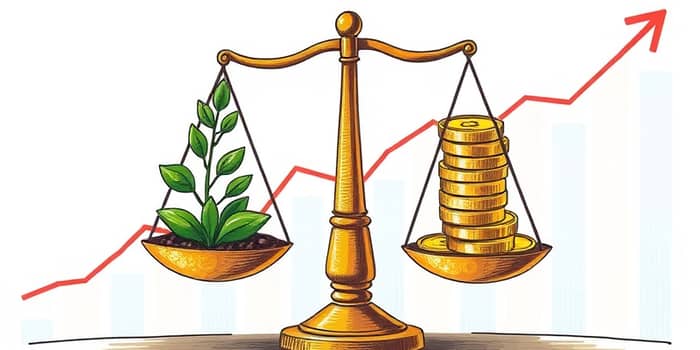
Investing successfully demands both foresight and discipline. In today’s dynamic markets, combining the pursuit of growth with valuation discipline offers a balanced path toward long-term gains. This hybrid strategy, widely known as Growth at a Reasonable Price (GARP), has become a favorite among investors seeking sustainable returns.
By avoiding the extremes of pure growth and pure value, GARP provides a pragmatic middle ground. It seeks companies with robust expansion potential, while ensuring investors do not overpay for that promise. The approach blends analytical rigor with aspirational growth targets, promising a resilient portfolio across market cycles.
At its core, GARP is an equity investment approach that merges aspects of both growth and value investing. GARP investors look for companies exhibiting consistent above-market earnings growth, while ensuring their valuations remain reasonable. The aim is to capture upside potential without succumbing to speculative bubbles or overpriced securities.
Unlike pure growth strategies that may chase sky-high price multiples, or value approaches that sometimes cling to stagnant names, GARP rests on the principle of balance between opportunity and valuation. The strategy emphasizes disciplined entry points and prudent portfolio construction.
Successful GARP investing relies on clear metrics and disciplined screening. Investors typically focus on several core criteria to identify suitable candidates:
The centerpiece of a GARP screen is the price/earnings growth (PEG) ratio, calculated as the P/E ratio divided by the expected annual earnings growth rate. A PEG of 1 suggests a stock is fairly priced relative to its growth outlook. For example, a company with a P/E of 20 and projected growth of 20 percent yields a PEG of 1.
Understanding how GARP differs from pure growth and value strategies helps illustrate its unique benefits. The table below provides a clear comparison:
The GARP approach gained prominence in the 1980s, when famed fund manager Peter Lynch popularized it while leading the Fidelity Magellan Fund. Lynch’s success demonstrated the power of combining growth prospects with rigorous valuation checks. His mantra of buying stocks with solid growth at fair prices has inspired generations of investors.
Over time, GARP evolved into a recognized factor strategy, embraced by both retail and institutional participants. S&P Dow Jones research and various ETF providers now offer products tailored to GARP criteria, reflecting its enduring appeal in diverse market environments.
Like any investment style, GARP has distinct advantages and potential limitations. Understanding these trade-offs is critical for aligning strategy with investor goals.
However, GARP can underperform in scenarios where pure growth surges. During steep bull markets, portfolios heavily weighted toward growth stocks may outshine a GARP mix, especially if valuations expand significantly. Additionally, effective GARP investing demands careful screening and ongoing analysis—there are no rigid rules or absolute exclusion thresholds.
Implementing a GARP strategy involves both quantitative screening and qualitative evaluation. Investors may begin with a broad stock universe—such as the S&P 500—and apply GARP filters using financial data platforms or brokerage tools.
An illustrative process might include:
Investors can supplement individual stock picks with specialized ETFs that track GARP indices. This dual approach balances active selection with passive diversification, reducing single-stock risk while capturing the hybrid growth-value premium.
Familiarity with core valuation and profitability measures is essential for GARP success:
P/E Ratio (Price-to-Earnings): Market price per share divided by earnings per share, indicating how much investors pay for each dollar of earnings.
PEG Ratio: P/E ratio divided by expected earnings growth rate. A PEG near or below one suggests attractive valuation relative to growth.
Debt/Equity Ratio: Total debt divided by total equity, signaling financial leverage and balance sheet health.
EPS Growth Rate: Annual increase in earnings per share, reflecting the company’s profit expansion trajectory.
Growth at a Reasonable Price stands out as a balanced, pragmatic investment philosophy. By marrying growth ambitions with valuation discipline, GARP seeks to deliver solid upside potential while preserving capital during market stress. It offers a compelling framework for investors who wish to avoid the pitfalls of extreme styles and pursue risk-adjusted outperformance over full market cycles.
Whether through meticulously selected individual stocks or targeted ETFs, GARP remains a versatile approach that adapts to evolving market conditions. Its emphasis on sustainable earnings growth and reasonable entry prices ensures portfolios are well-positioned to thrive in varied economic environments, embodying a true blend of offense and defense in equity investing.
References













